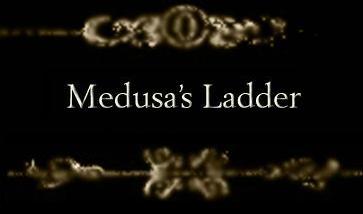|
|
|
|
|
|
|


|
6.27.8
A Hero's Dilemma: Green and its Evil Twin If there's a feel-good buzzword right now in consumer culture, it's the word 'green.' In the past week alone, I have seen probably a half dozen different new brochures and signs in establishments lauding their supposedly responsible, earth-friendly practices of energy conservation; and the word green was prevalent in all. We are commanded and expected to 'go green,' and who would argue? We want to save the world, after all. Green brings to mind pristine Edenic meadows dripping with dew; it's pure, clean, natural, familiar, earthly—anything but toxic, unsafe, techno, mysterious and other. Right? Like all good modern superheros, it has an evil twin; green has another side that signifies these exact qualities above and more. Green may be seen as a very liminal thing—an ambassador with a passport between worlds and poles. There's a precise neon bright limey hue—that 'sci-fi green'—that instantly and effectively communicates something weird and unearthly is going on. The Borg ship leaks an especially bright green; Spock's blood is green (exactly opposite on the color wheel from ours.) This sci-fi green is likewise used ubiquitously on book covers, websites, and movie posters to communicate meaning. Green is the default color of all things alien. Despite the 'real' descriptions of the bug-eyed aliens, and even their name "grays," the term "little green men" has stuck. Most alien trinkets—keychains, bubble gum machine figurines, etc.—is green. In this column, I once used an image of a stove to accompany an article about UFOs in retro TV shows: in an episode of Green Acres, aliens turn it a glowing green—a testimony to the reality of their presence. The message is instantly understood, despite being somewhat illogical or nonsensical. Green simply equals alien.
So, why is green so crazy-flexible and duplicitous? How does it morph into its opposite so seamlessly—contain it like a yin yang symbol--that we don't usually notice consciously? Perhaps its power as a buzzword and social message even rely on this psycho-subtext. During the whole subliminal message craze of the early 1980s, I became intrigued with the idea of provocative and death-oriented messages in magazine ads. I used to scour the pages of my Glamour and Seventeen for such wonders, alas, I found nothing--until I began reading my father's OMNI magazines, that is. The images I found in cigarette ads (if anyone recalls which brand, please email me—I can't find reference to this anywhere) were astonishing. In one, a "liberated" woman happily enjoys a cigarette while she strolls on her idyllic penthouse rooftop garden. She is approached by a strapping, shirtless hunk—her apparent gardener, who has a large shovel slung across his shoulders, a posture not unlike Christ bearing the cross. Cute and lovely scene, until the eye travels to the darker background from whence the gardener has emerged. It's a cemetery, complete with black, dead trees, dilapidated ancient fence, tombstones, and a freshly dug grave. This gardener has been digging our liberated woman's grave, and she couldn't be happier. That death wish—the fascination with darkness, mystery and the unknown that sells. Is it possible that the appeal of "going green" contains similar elements? Could we be so attracted to the idea of going green because it holds not just the outright symbolism, but also the more mysterious? Further, could what ultimately "saves the planet" actually lie within that more mysterious green realm—what we now think of as alien, other?
Visit Richelle's blog: Beamships Equal Love |